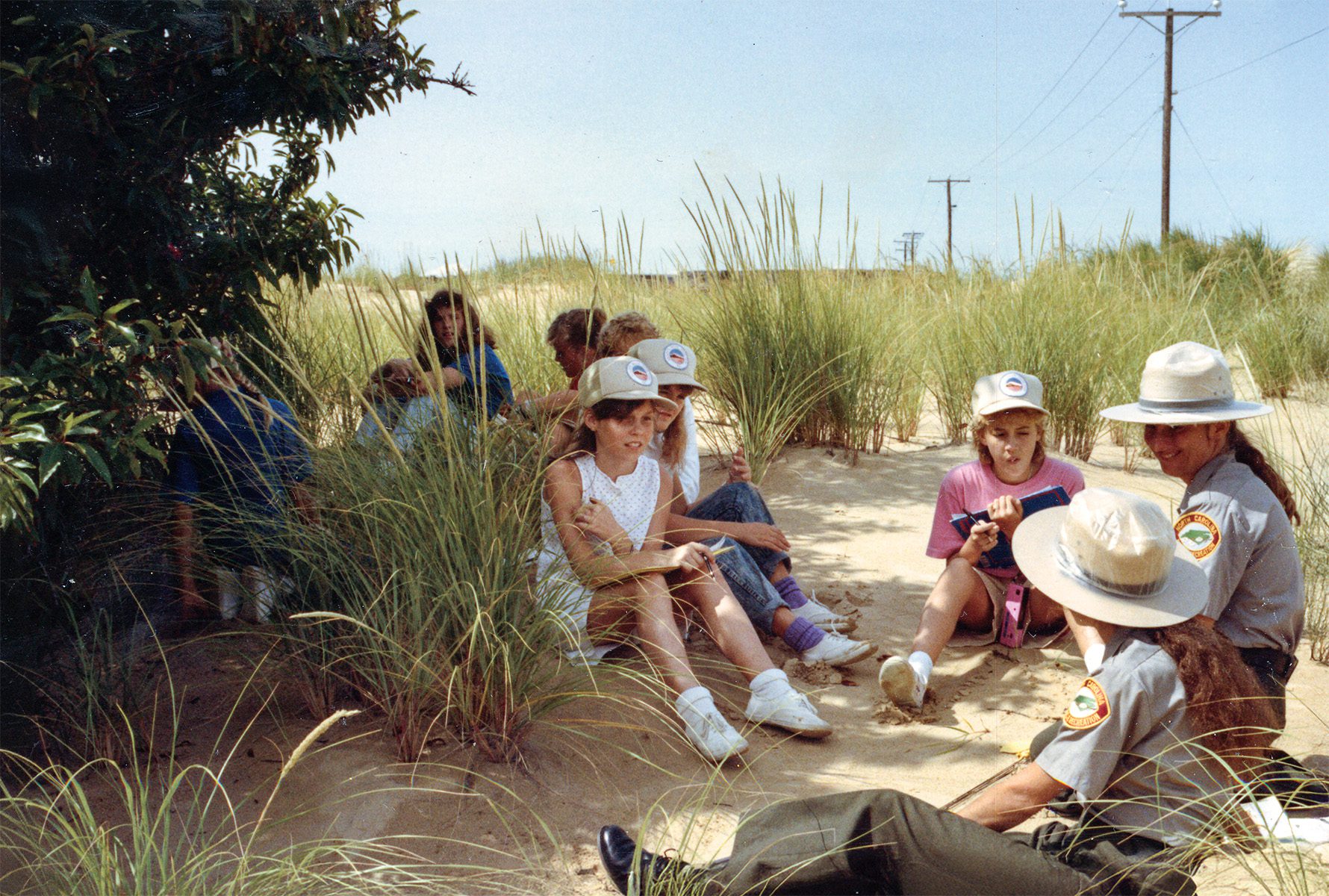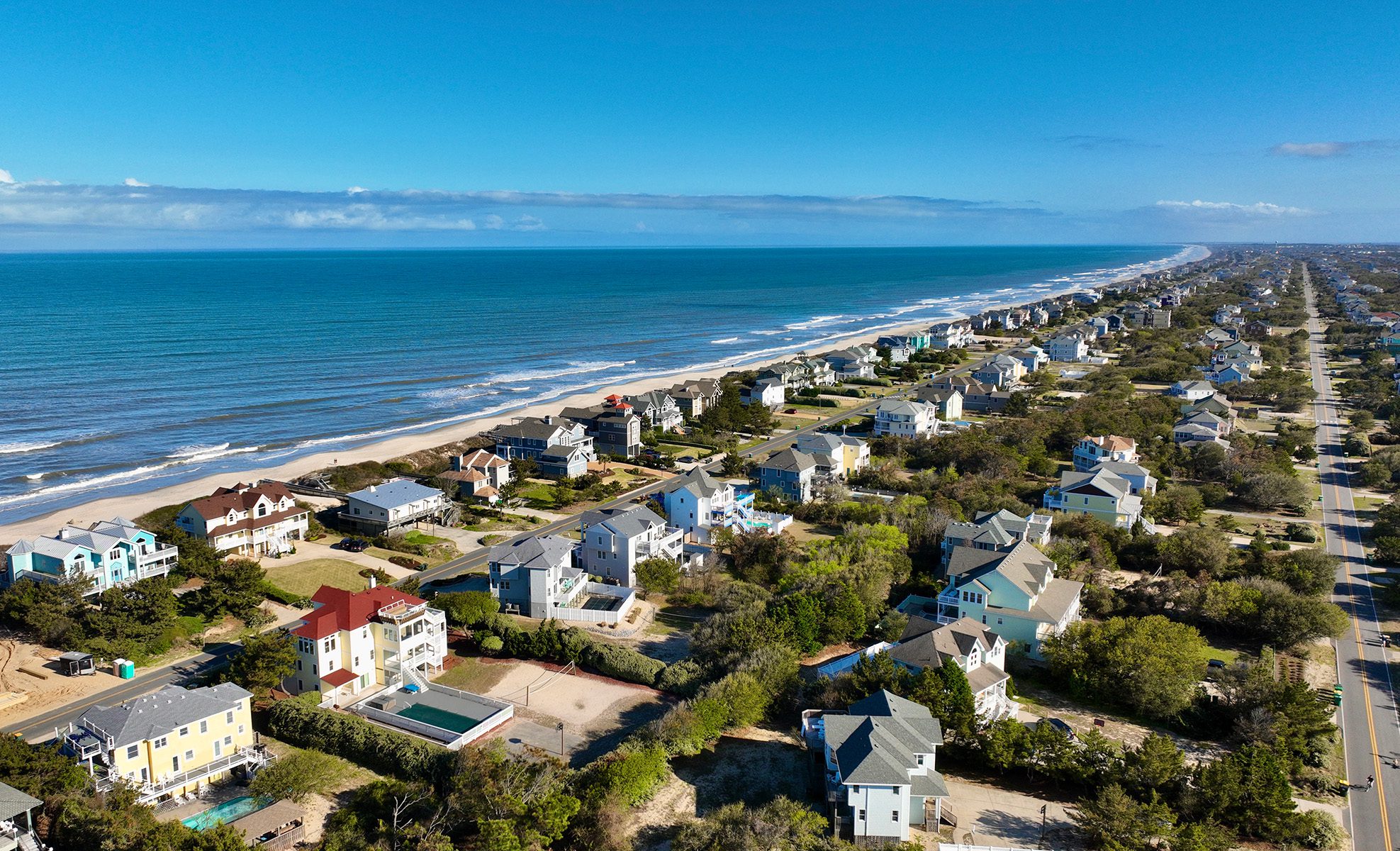The Twenty Year Wish
An OBX Property Owner’s Legacy
by Hadley Shoaf
On Merrimac Lane in Salvo sits a house belonging to Richard and Garnet Shoaf. It’s a two-story home, built in that “upside down” style like so many of the houses on the Outer Banks, the living area upstairs and the bedrooms downstairs. It sits high above the ground, lifted by tall, wooden pillars. Underneath its body is an outside shower and gardening beds filled with foraged seashells. There are wire clotheslines that hold bathing suits and towels according to the forecast. There’s a lift with a metal, cage-like basket that carries stacked suitcases and sandy coolers up and down and, more recently, aging grandparents with their rolling walkers. Inside, plastic placards remain nailed to the wooden walls, reminders from years past when the home was a rental. The placards remind you to “only flush toilet paper down the toilet” and “no cigarette butts in the sink” for the sake of the septic system. There’s a cork bulletin board with business cards and polaroids, brochures and takeout menus pinned to its flesh; a travel brochure for renters before reviews and ratings belonged on the internet and its web of sites and pages. Two plaques drilled side-by-side into the paneled walls read, “In appreciation for your dedication and service to the Salvo Fire Department,” one for Richard, one for Garnet respectively. Photographs of my cousins and I rest on hard-to-reach shelves and bedside tables, showing our missing teeth and sand toys. The dresser drawers are still filled with archival newspaper clippings of old Coastal Watch issues and seashell wrapping paper and a Salvo Fire Department reference manual. The home is a time capsule; untouched by the changes of growing up.
Nothing has been moved or replaced, and I realize, sitting alone on the Lazy Boy where my grandma would read the Pittsburgh-Post Gazette and braid my hair, that nothing about the house has changed except the people inside.
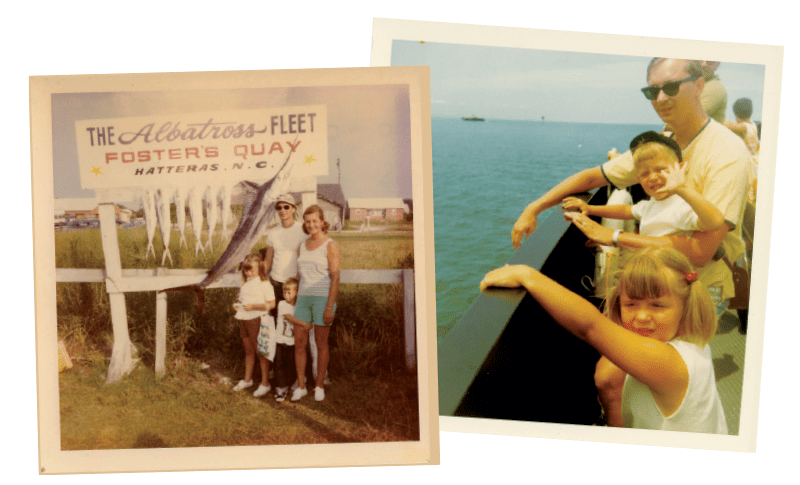
Above left; Family trip at Foster’s Quay; Right; Richard and his children, Todd and Sue, on the ferry to Ocracoke Island.
Top; Recent photo of “Twenty Year Wish” from one of the author’s summers spent living in the house and writing for Outer Banks Coastal Life. Photos courtesy of Todd Shoaf.
My grandparents first visit to Hatteras Island was in the summer of 1969. They packed their two young children, my father and aunt, into their station wagon and drove the couple hundred miles from Pittsburgh, PA to the Lighthouse Camping Ground in Buxton. “[Back] then you could stop anywhere along the road and hop over the dunes and have an entire beach to yourself,” my pap remembers. For miles you couldn’t see another car, another person, on the shore. It was empty, limitless, intimate. “There was one grocery store on the island, and no place to buy a drink,” my pap chuckled. The family’s biggest expense was ice. They purchased bags daily to fill their red plastic cooler that kept several days’ worth of food. On their final night of their week-long trip, a thunder storm billowed over their campsite, the kind familiar to Hatteras, with thick gusts of wind and abrupt formation. Those trademark winds caught the back peak of the tent’s roof, inflating the fabric like a sail. The tent untethered itself from the sand, blowing up, off the ground and landing on my kid father and his wide eyes. “We are never coming here again,” my pap huffed into the wind, filling the station wagon with their campsite. By the summer of ’72, three years after their first trip to Hatteras Island, my grandparents had purchased two adjoining lots in Salvo.
Even with the acquisition of the lot, a beach house was far-off. In the meantime, my grandparents stayed in a Coleman Pop-Up Camper by the Lighthouse or rented a room at the Surf Motel in Buxton. My pap and dad would catch bushels of crab at the Canadian Hole with large nets they drug through shallow water. They’d make spaghetti dinners in the camper and feed the leftovers to the seagulls on paper plates, the gulls staining their chests with marinara. They bought Hatteras-style clam chowder by the half gallon and swam at the pool by the Hatteras Colony sales office. After a week, they’d go back to Pittsburgh, slowly filling their home there with Hatteras Lighthouse memorabilia and notable seashells.
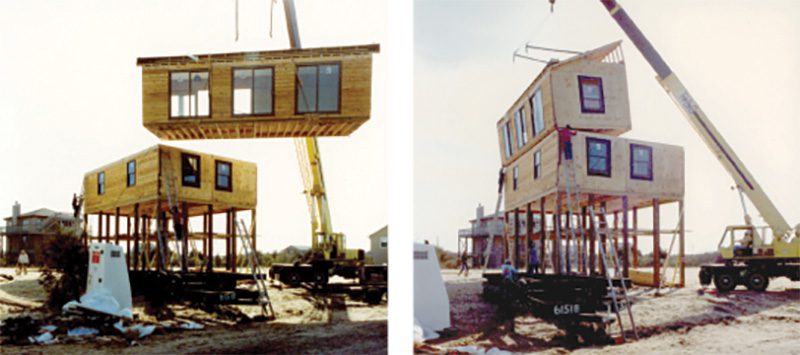
Photos taken by Richard of the second story module being lifted and added to the house; Photos courtesy of Richard Shoaf.
It wasn’t until 1992 that Richard and Garnet’s house was built. My pap sat across the street as cranes lifted each section of the home stories high in the air and placed it on top of the stilts, the modules fitting together like the pieces of a Lego set. It was one of the first homes risen in the neighborhood. The roads were dirt, had yet to be paved. The vegetation had been decimated for development; a resurgence of small brush growing in unkept patches. Though not oceanfront, the raised house had an uninterrupted view of the Atlantic. My pap installed a wooden sign into the frontmost stilt with the home’s name etched into its face. It read “Twenty Year Wish.”
For six months out of the year, my grandparents lived on Hatteras Island. They would leave before the start of the summer season, Sun Realty turning “Twenty Year Wish” into a rental property and return when the crowds and summer heat had faded. Each November the two did what they called, “playing Santa Claus.” My pap wore a red suit and faux white beard, riding atop the Salvo Fire Department firetruck and stopping at the Chicamicamico Life Saving Station, while Gram passed out candy and gift bags to each kid that visited Santa.
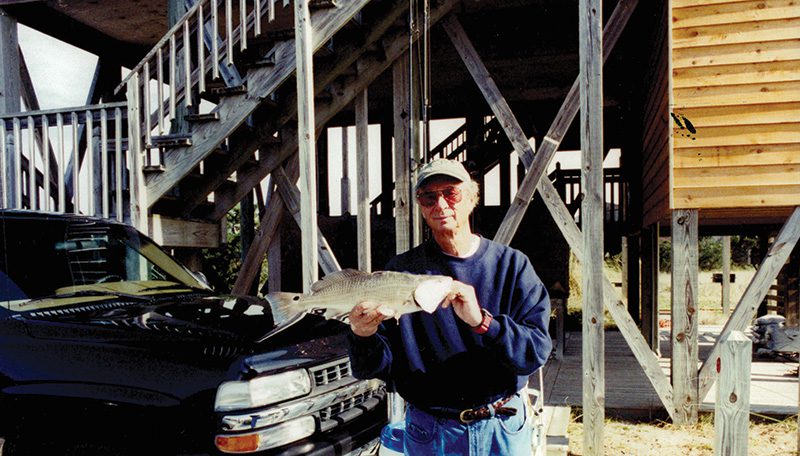
Richard posed with his catch under the newly built “Twenty Year Wish”. Photo courtesy of Todd Shoaf.
For years they sacrificed the peak summer months to renters, until eventually retiring their home to their children and children’s children. My parents and sister and I would spend a week there every July. Dad would fill that same red, plastic cooler, now cracked and faded, with ice, and we’d sit on the beach until we were exhausted from the orange, pulsing heat of the sun. We’d all come back to the house then, rinse off the white sheen of salt that lay on our skin and the sand that clung to our scalps, and spend the night together, Gram in her Lazy Boy, Pap on the far right end of the couch, playing cards or listening to music or reading. Downstairs, bookshelves held my childhood picture books. I would carry one up the stairs to Gram and read them to her. If I woke up early enough, and I always did, she would give me an Oreo behind the kitchen island and I’d eat the cream from the inside before Dad came upstairs and scolded us. One of us, either me or my sister, we can’t remember, took our first steps across the pink living room carpet. My sister broke her arm at that house by jumping on the couch cushions until she fell off and came crashing down, forearm first, onto the wooden edge of the coffee table. I remember her sitting in the back of Dad’s truck, parked on the beach, her pink cast in her lap while she watched the DVD player.
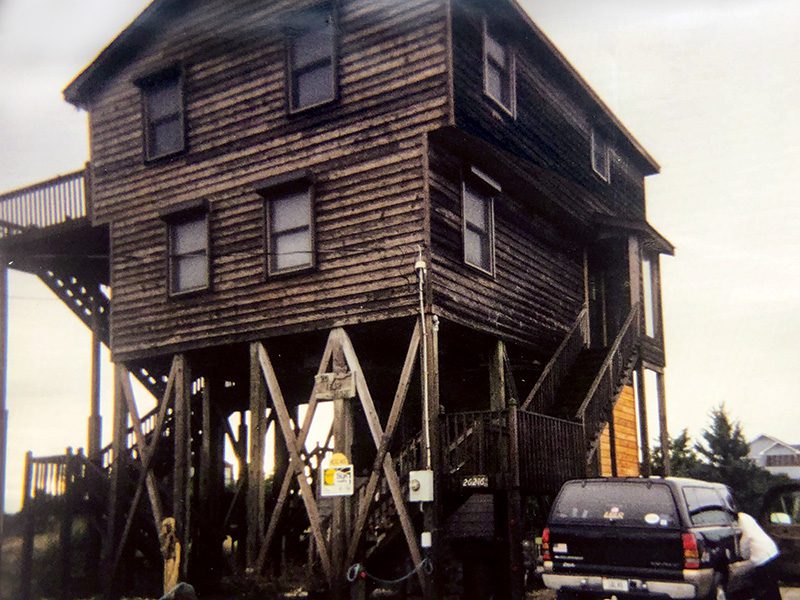
The completed “Twenty Year Wish” in the early 2000’s during its time as a rental property using Sun Realty; Photo courtesy of Richard Shoaf.
Until recently, my grandparents had been to Hatteras Island every year save two since that first visit in 1969. Now the trip from Pennsylvania to Salvo has become strenuous and they haven’t seen the island in some years. But they still think about it, still love it. “[That house] fulfilled my life,” Garnet said. “It made me feel like I was doing something.” I guessed she meant the things she did while living there; the friendships she had made, the service she had lent to the fire department. But in another sense, I knew she meant the legacy both her and my grandpa had created, the birth of my family’s continued pilgrimage to the island. Now I spend the summers there, learning to surf and working seasonal jobs. I visit the houses of their very first neighbors, bringing them banana bread in exchange for cheesecake. I try my best to figure out what is leaking into the septic tank and remind the air conditioning what it feels like to pump out cool air. Mostly, I like to think I’m keeping the house company. I go through drawers of folded linens and wrinkled business cards and refuse to move anything. It’s not mine to move.
So, with the tremendous help from my Dad, who I dial when the toilet runs or a new wasp nest settles itself under the house, I try my best to look after the aging house. Keep it frozen, reminiscent of every summer I stayed there before. I try to preserve the time capsule that is the “Twenty Year Wish.”




